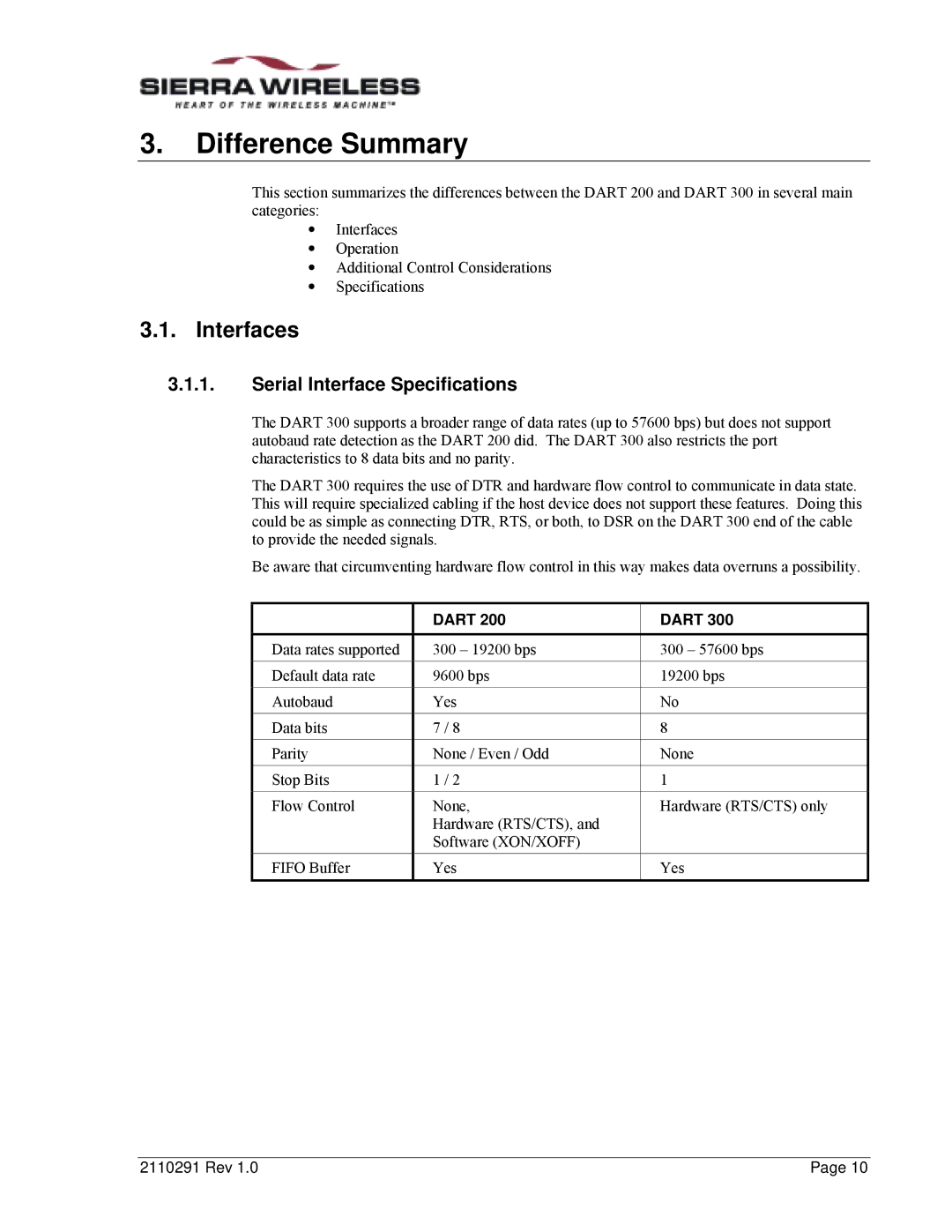
3.Difference Summary
This section summarizes the differences between the DART 200 and DART 300 in several main categories:
•Interfaces
•Operation
•Additional Control Considerations
•Specifications
3.1.Interfaces
3.1.1.Serial Interface Specifications
The DART 300 supports a broader range of data rates (up to 57600 bps) but does not support autobaud rate detection as the DART 200 did. The DART 300 also restricts the port characteristics to 8 data bits and no parity.
The DART 300 requires the use of DTR and hardware flow control to communicate in data state. This will require specialized cabling if the host device does not support these features. Doing this could be as simple as connecting DTR, RTS, or both, to DSR on the DART 300 end of the cable to provide the needed signals.
Be aware that circumventing hardware flow control in this way makes data overruns a possibility.
| DART 200 | DART 300 |
|
|
|
Data rates supported | 300 – 19200 bps | 300 – 57600 bps |
|
|
|
Default data rate | 9600 bps | 19200 bps |
|
|
|
Autobaud | Yes | No |
Data bits | 7 / 8 | 8 |
|
|
|
Parity | None / Even / Odd | None |
|
|
|
Stop Bits | 1 / 2 | 1 |
Flow Control | None, | Hardware (RTS/CTS) only |
| Hardware (RTS/CTS), and |
|
| Software (XON/XOFF) |
|
FIFO Buffer | Yes | Yes |
|
|
|
2110291 Rev 1.0 | Page 10 |
